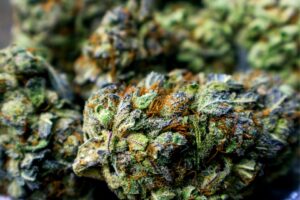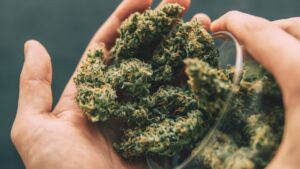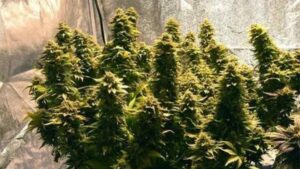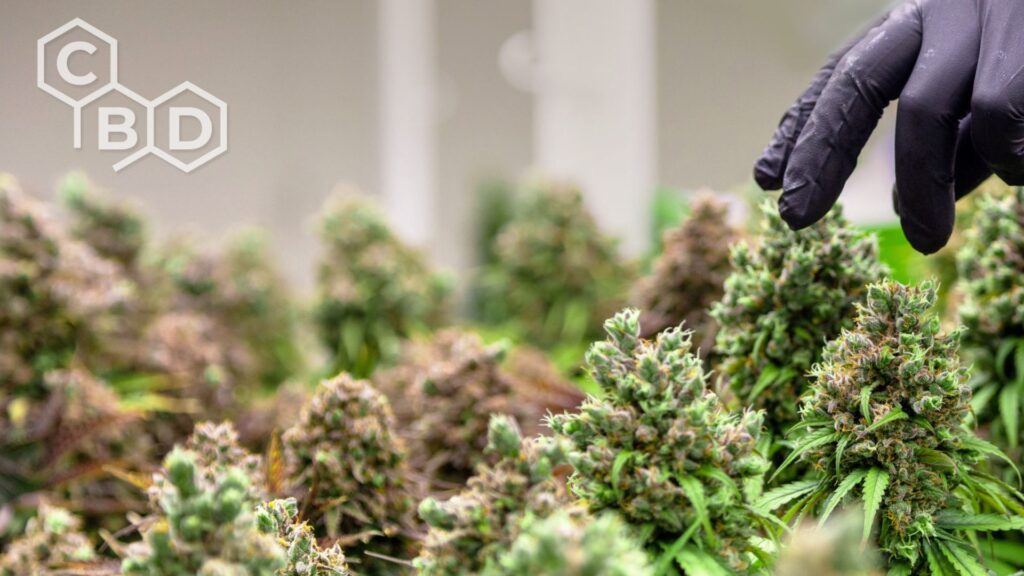In recent years, the cannabis industry has experienced a surge of interest and innovation, particularly in products aimed at harnessing the therapeutic properties of cannabinoids. Amidst this wave, CBD-stroking buds have emerged as a topic of intrigue and discussion. These buds, rich in cannabidiol (CBD) and low in tetrahydrocannabinol (THC), have garnered attention for their purported health benefits and unique properties.
In this article, we delve into the realm of CBD-stroking buds, shedding light on what sets them apart, debunking common misconceptions, and exploring their potential advantages. From understanding their composition to navigating the complex landscape of legality and regulation, we embark on a journey to uncover the truth behind these enigmatic botanicals. So, join us as we unravel the mysteries and unveil the potential of CBD-stroking buds.
Brief Overview of CBD-Stroking Buds:
CBD-stroking buds represent a specialized variety of cannabis flowers distinguished by their high levels of cannabidiol (CBD) and minimal tetrahydrocannabinol (THC) content. Unlike traditional marijuana strains, which often contain high levels of THC and are prized for their psychoactive effects, CBD-stroking buds are cultivated for their therapeutic potential. These buds offer consumers a non-intoxicating alternative, Exotic Flower harnessing the medicinal properties of CBD without inducing the typical “high” associated with THC-rich cannabis.
Statement of Purpose:
The primary objective of this exploration is twofold: to debunk prevalent myths surrounding CBD-stroking buds and to illuminate their numerous advantages. As misinformation and misconceptions continue to circulate regarding these botanicals, it is imperative to provide clarity and accurate information. By dispelling myths and highlighting the benefits of CBD-stroking buds, we aim to empower individuals to make informed decisions about their health and well-being. Through this endeavor, we aspire to foster a deeper understanding of CBD-stroking buds and their potential to enhance lives.
Understanding CBD-Stroking Buds
CBD-stroking buds represent a distinct category within the cannabis spectrum, characterized by their unique composition and therapeutic potential. These buds are cultivated specifically to contain high levels of cannabidiol (CBD) while minimizing the presence of tetrahydrocannabinol (THC), the psychoactive compound found in traditional marijuana strains.
CBD-stroking buds offer consumers an alternative to THC-dominant cannabis, providing the medicinal benefits of CBD without inducing intoxication. This makes them particularly appealing to individuals seeking relief from various ailments without experiencing the euphoric or impairing effects commonly associated with THC.
To understand CBD-stroking buds fully, it’s essential to grasp their composition and how it differs from conventional marijuana. While both varieties of cannabis originate from the same plant species, Cannabis sativa or Cannabis indica, CBD-stroking buds are selectively bred to contain higher concentrations of CBD and lower levels of THC. This careful cultivation process ensures that users can reap the therapeutic benefits of CBD without the risk of experiencing unwanted psychoactive effects.
Furthermore, it’s crucial to recognize the legal status and regulations surrounding CBD-stroking buds. While CBD itself has been legalized in many jurisdictions due to its non-intoxicating nature and potential therapeutic value, regulations regarding CBD products, including CBD-stroking buds, can vary significantly from one region to another. Understanding these regulations is essential for consumers to ensure compliance with local laws and regulations.
Understanding CBD-stroking buds involves grasping their unique composition, therapeutic potential, and legal status. With this knowledge, individuals can make informed decisions about incorporating CBD-stroking buds into their wellness routines, potentially unlocking the myriad benefits that these botanicals offer.

How do CBD buds make you feel?
CBD buds, also known as hemp flowers or CBD-rich cannabis, have gained popularity for their potential therapeutic effects and their ability to induce a sense of relaxation without the psychoactive high associated with THC-rich cannabis. When consumed, CBD buds can elicit various feelings and sensations, largely influenced by individual factors such as dosage, tolerance, and overall health condition. Here’s a breakdown of how CBD buds may make you feel:
- Relaxed and Calm: One of the most common effects reported by users of CBD buds is a profound sense of relaxation and calmness. CBD interacts with the body’s endocannabinoid system, which plays a crucial role in regulating stress responses. Consuming CBD buds may help alleviate feelings of anxiety and promote a state of relaxation without inducing sedation.
- Pain Relief: Many individuals turn to CBD buds for their potential analgesic properties. CBD has been studied for its ability to alleviate various types of pain, including chronic, neuropathic, and inflammatory pain. By interacting with receptors in the brain and immune system, CBD may help reduce pain perception and improve overall comfort levels.
- Improved Mood: Some users report experiencing an uplifted mood and a greater sense of well-being after consuming CBD buds. CBD is believed to influence serotonin receptors in the brain, which play a role in regulating mood and emotions. As a result, CBD may help alleviate symptoms of depression and promote a more positive outlook on life.
- Enhanced Focus and Clarity: Contrary to the impairing effects of THC, CBD is not known to cause cognitive impairment or mental fog. In fact, some users report feeling more focused and mentally sharp after consuming CBD buds. This may be attributed to CBD’s potential ability to modulate neurotransmitter activity and promote cognitive function.
- Improved Sleep: CBD buds are also sought after for their potential to promote better sleep quality. Many users report experiencing deeper and more restful sleep after consuming CBD, which may be attributed to its calming and anxiety-reducing effects. By helping to alleviate stress and promote relaxation, CBD may facilitate the onset and maintenance of sleep.
Are CBD buds safe to smoke?
As the popularity of CBD products continues to rise, particularly CBD buds or hemp flowers, questions about their safety, especially when smoked, are becoming more prevalent. Here’s a breakdown of the safety considerations surrounding smoking CBD buds:
- Potential Health Risks of Smoking: Like any form of smoking, inhaling the combustion products of plant material, including CBD buds, can pose certain health risks. Smoking can expose the respiratory system to harmful substances such as tar, carbon monoxide, and particulate matter, which may contribute to respiratory issues and lung damage over time. These risks are not specific to CBD buds but apply to any substance that is smoked.
- Quality and Purity of CBD Buds: The safety of smoking CBD buds largely depends on their quality and purity. It’s essential to choose high-quality CBD buds sourced from reputable suppliers who adhere to strict cultivation and processing standards. Look for products that have been tested by third-party laboratories for potency and purity, with certificates of analysis available to verify their cannabinoid content and absence of contaminants.
- Avoiding Harmful Additives: Some CBD products, including pre-rolled joints or cigarettes, may contain additives such as flavorings, fillers, or synthetic cannabinoids, which can pose additional health risks when smoked. To minimize potential harm, opt for pure CBD buds without any added ingredients or additives.
- Consideration for Individual Health: Individuals with pre-existing respiratory conditions, such as asthma or chronic obstructive pulmonary disease (COPD), may be more susceptible to the adverse effects of smoking CBD buds. In such cases, alternative methods of CBD consumption, such as vaping, sublingual tinctures, or edibles, may be preferable to smoking.
- Alternative Consumption Methods: Fortunately, there are numerous alternative methods of consuming CBD that do not involve smoking. Vaping CBD e-liquids or using vaporizers specifically designed for dry herb consumption can offer a smoke-free alternative while still providing a rapid onset of effects. Additionally, sublingual tinctures, capsules, edibles, and topical products are all viable options for those who prefer to avoid inhalation.

Debunking Myths Surrounding CBD-Stroking Buds
CBD-stroking buds, often misunderstood and misrepresented, have become a subject of numerous myths and misconceptions. By shedding light on the truth behind these myths, we can better understand the realities of CBD-stroking buds and their potential benefits. Here’s a closer look at some common myths surrounding CBD-stroking buds and the facts that debunk them:
- Myth #1: CBD-Stroking Buds Are Psychoactive: One prevalent myth surrounding CBD-stroking buds is that they induce a psychoactive “high” similar to THC-rich cannabis. However, this is far from the truth. CBD, the primary cannabinoid found in CBD-stroking buds, is non-psychoactive, meaning it does not produce intoxicating effects. While THC may be present in trace amounts, it is typically well below the threshold needed to cause psychoactive effects, making CBD-stroking buds a non-intoxicating option for those seeking therapeutic benefits without the high.
- Myth #2: CBD-stroking Buds Are Addictive: Another misconception is that CBD-stroking buds possess addictive properties akin to THC-rich cannabis. However, research suggests otherwise. CBD is not known to be addictive, and numerous studies have demonstrated its potential as a non-addictive alternative for managing various conditions, including pain, anxiety, and insomnia. Unlike THC, which can lead to dependence in some individuals, CBD does not produce the same addictive effects, making it a safer option for long-term use.
- Myth #3: CBD-Stroking Buds Have No Medical Benefits: Contrary to this myth, CBD-stroking buds have been the subject of extensive scientific research, revealing a wide range of potential therapeutic benefits. From alleviating chronic pain and reducing inflammation to easing symptoms of anxiety and depression, CBD has shown promise in treating various medical conditions. Additionally, CBD-stroking buds may offer neuroprotective properties and have been investigated for their potential role in managing neurological disorders such as epilepsy and multiple sclerosis.
By debunking these myths and separating fact from fiction, we can better understand the true nature of CBD-stroking buds and the potential they hold for improving health and well-being. It’s essential to seek accurate information and rely on scientific evidence when evaluating the efficacy and safety of CBD products. With a clearer understanding of the facts, individuals can make informed decisions about incorporating CBD-stroking buds into their wellness routines, confident in their potential benefits and safety profile.
Buds too Heavy for Plant
In the world of cannabis cultivation, a common challenge that growers may encounter is when the buds become too heavy for the plant to support. This phenomenon, known as bud weight overload or bud weight stress, occurs when the flowering buds grow larger and denser than the plant’s structure can adequately support. This small plants big buds can lead to various issues and may affect the overall health and yield of the plant. Here’s a closer look at why buds may become too heavy for the plant and how growers can address this problem:
- Genetics and Strain Characteristics: Some cannabis strains are naturally predisposed to produce larger and denser buds than others. Additionally, environmental factors such as nutrient availability, light intensity, and temperature can influence bud development. Certain strains may be more prone to producing heavy buds, increasing the risk of bud weight overload.
- Nutrient Imbalance: Nutrient imbalances, particularly during the flowering stage, can contribute to excessive bud growth and weight. An inadequate supply of essential nutrients such as potassium, phosphorus, and calcium may weaken plant structures and decrease the ability to support heavy buds.
- Environmental Stress: Environmental stressors such as fluctuations in temperature, humidity, and light can impact the plant’s ability to develop strong and sturdy stems capable of supporting heavy buds. High temperatures, in particular, can cause plants to stretch and become leggy, increasing the risk of bud weight overload.
- Prevention and Management: To prevent bud weight overload, growers can implement various techniques to support the plant’s structure and optimize bud development. This includes providing adequate support structures such as trellises, stakes, or netting to help distribute the weight of the buds evenly. Additionally, maintaining optimal nutrient levels and environmental conditions throughout the growing cycle can help promote healthy bud development and minimize the risk of overload.
- Harvest Timing: In some cases, growers may choose to harvest the buds earlier than planned to prevent them from becoming too heavy for the plant to support. While this may result in slightly smaller yields, it can help avoid damage to the plant and ensure a higher-quality end product.

Touching Buds During Flowering
During the flowering stage of cannabis cultivation, when the plants begin to produce buds, growers often find themselves faced with the dilemma of whether or not to touch the buds. While it’s natural to want to inspect and care for the plants, handling the buds during this critical stage can have both positive and negative consequences. Here’s a closer look at the considerations surrounding touching buds during flowering:
- Positive Effects:
- Inspection and Maintenance: Gently touching the buds allows growers to inspect them for signs of pests, mold, or other issues that may arise during the flowering stage. This hands-on approach enables growers to identify and address any problems promptly, helping to ensure the plants’ overall health and quality.
- Support and Training: Some growers may choose to support or train the buds by gently manipulating them to encourage upward growth or improve airflow. This can help prevent bud rot and mold by reducing humidity levels and promoting better ventilation within the canopy.
- Negative Effects:
- Damage and Contamination: Excessive handling of the buds can lead to physical damage, bruising, or contamination from oils, dirt, or bacteria present on the hands. This can compromise the quality and appearance of the buds and may increase the risk of mold or other issues developing.
- Trichome Damage: Trichomes, the resinous glands that contain cannabinoids and terpenes, are highly sensitive to physical contact. Handling the buds can cause trichomes to break off, reducing potency and diminishing the overall quality of the final product.
- Best Practices:
- Minimize Touching: Whenever possible, growers should aim to minimize touching the buds during flowering to avoid potential damage or contamination. Instead, use non-invasive methods such as visual inspection or gentle manipulation of surrounding foliage to care for the plants.
- Use Gloves: If it’s necessary to handle the buds, wearing clean gloves can help minimize the risk of contamination and protect the delicate trichomes from damage. Latex or nitrile gloves are recommended for their non-reactive properties and ease of use.
- Handle With Care: When touching the buds, do so with extreme care and gentleness to avoid causing unnecessary stress or damage to the plants. Avoid squeezing or pressing on the buds, and handle them only when absolutely necessary.
In conclusion, while it may be tempting to touch the buds during flowering, growers should exercise caution and discretion to avoid potential negative effects. By following best practices and minimizing unnecessary handling, growers can ensure the health, quality, and potency of their cannabis plants during this critical stage of growth.
Advantages of CBD-Stroking Buds
CBD-stroking buds, also known as CBD-rich cannabis or hemp flowers, offer a plethora of advantages that have garnered attention and acclaim among users seeking natural remedies and big weed buds wellness solutions. Here are some of the key advantages of CBD-stroking buds:
- Non-Psychoactive: CBD-stroking buds contain high levels of cannabidiol (CBD) and minimal amounts of tetrahydrocannabinol (THC), the psychoactive compound found in traditional marijuana. This means that consuming CBD-stroking buds does not induce “high” or intoxicating effects, making them suitable for individuals who wish to experience the therapeutic benefits of cannabis without the psychoactive experience.
- Therapeutic Potential: CBD is renowned for its potential therapeutic properties, which may include pain relief, anxiety reduction, anti-inflammatory effects, and neuroprotective properties. CBD-stroking buds offer a natural and holistic approach to wellness, providing relief from various ailments and promoting overall health and well-being.
- Versatility of Consumption: CBD-stroking buds can be consumed in a variety of ways to suit individual preferences and needs. They can be smoked, vaporized, infused into edibles, or used to make topical products such as creams or lotions. This versatility allows users to customize their CBD experience and find the most effective method of consumption for their specific goals.
- Fast-Acting Relief: When smoked or vaporized, CBD-stroking buds provide rapid onset of effects, allowing users to experience relief from symptoms such as pain, anxiety, or stress within minutes. This makes them an ideal option for individuals seeking immediate relief from acute symptoms or discomfort.
- Natural and Organic: CBD-stroking buds are cultivated from hemp plants grown using organic and sustainable farming practices. They are free from synthetic chemicals, pesticides, and herbicides commonly used in conventional agriculture, making them a safe and natural choice for health-conscious consumers.
- Legal Accessibility: In many regions, CBD-stroking buds are legally accessible for purchase and consumption, as they contain negligible amounts of THC and are classified as hemp products rather than marijuana. This legal distinction allows individuals to access the therapeutic benefits of CBD without the legal restrictions associated with THC-rich cannabis.
Overall, the advantages of CBD-stroking buds make them a compelling option for individuals seeking natural, effective, and versatile solutions for wellness and symptom relief. With their non-psychoactive nature, therapeutic potential, and legal accessibility, CBD-stroking buds offer a promising avenue for enhancing health and improving quality of life.
Tips for Safe and Effective Use
While CBD-stroking buds offer numerous potential benefits, it’s essential to use them safely and effectively to maximize their therapeutic effects and minimize any risks. Here are some tips to ensure the safe and responsible consumption of CBD-stroking buds:
- Start Low and Go Slow: If you’re new to using CBD-stroking buds, start with a low dosage and gradually increase it as needed. This allows you to gauge your tolerance and sensitivity to CBD while minimizing the risk of adverse effects.
- Choose High-Quality Products: Choose CBD-stroking buds that come from reliable vendors who follow stringent quality guidelines and independent testing. To guarantee purity and safety, look for items devoid of heavy metals, pesticides, and other pollutants.
- Consider Your Method of Consumption: CBD-stroking buds can be consumed in various ways, including smoking, vaporizing, or infusing into edibles. Choose a method that aligns with your preferences and lifestyle, keeping in mind factors such as convenience, onset time, and potency.
- Be Mindful of Dosage: Pay attention to the dosage of CBD-stroking buds you consume and avoid exceeding recommended limits. While CBD is generally well-tolerated, consuming excessive amounts may lead to side effects such as dizziness, dry mouth, or fatigue.
- Be Aware of Potential Interactions: CBD may interact with certain medications or supplements, so it’s essential to consult with a healthcare professional before using CBD-stroking buds, especially if you’re taking prescription medications. They can provide personalized advice and guidance based on your individual health needs.
- Store Buds Properly: Proper storage is crucial for maintaining the potency and freshness of CBD-stroking buds. Store them in a cool, dark place away from direct sunlight and humidity to prevent the degradation of cannabinoids and terpenes.
- Practice Responsible Consumption: Use CBD-stroking buds responsibly and avoid consuming them in situations where impairment could pose a risk, such as when operating heavy machinery or driving. Always prioritize your safety and well-being when using CBD products.
- Listen to Your Body: Pay attention to how your body responds to CBD-stroking buds and adjust your dosage or consumption method accordingly. Everyone’s endocannabinoid system is unique, so what works for one person may not necessarily work for another.
By following these tips for safe and effective use, you can harness the potential benefits of CBD-stroking buds while minimizing any potential risks or adverse effects. Remember to prioritize your health and well-being and seek guidance from healthcare professionals as needed.
Conclusion
Recap of Key Points:
- Summarize the main points covered in the article, including the advantages, myths debunked, and tips for the safe and effective use of CBD-stroking buds.
- Highlight the non-psychoactive nature of CBD-stroking buds, their therapeutic potential, and the importance of choosing high-quality products.
Emphasizing the Importance of Informed Decision-Making:
- Stress the significance of making informed decisions about using CBD-stroking buds, taking into account individual health needs, preferences, and goals.
- Encourage readers to educate themselves about CBD, including its effects, potential benefits, and any associated risks or considerations.
- Remind readers to consult with healthcare professionals for personalized advice and guidance, especially if they have underlying health conditions or are taking medications.
Encouragement for Further Research and Exploration into CBD-Stroking Buds:
- Highlight the ongoing research and scientific exploration into the potential uses and benefits of CBD-stroking buds.
- Encourage readers to stay informed and curious about the latest developments in CBD research, including new studies, clinical trials, and emerging applications.
- Advocate for continued exploration and innovation in the field of cannabis science, with the goal of uncovering new therapeutic uses and optimizing the safety and efficacy of CBD-stroking buds.
By recapping key points, emphasizing informed decision-making, and encouraging further research and exploration, readers are empowered to navigate the complex landscape of CBD-stroking buds with confidence and knowledge.

